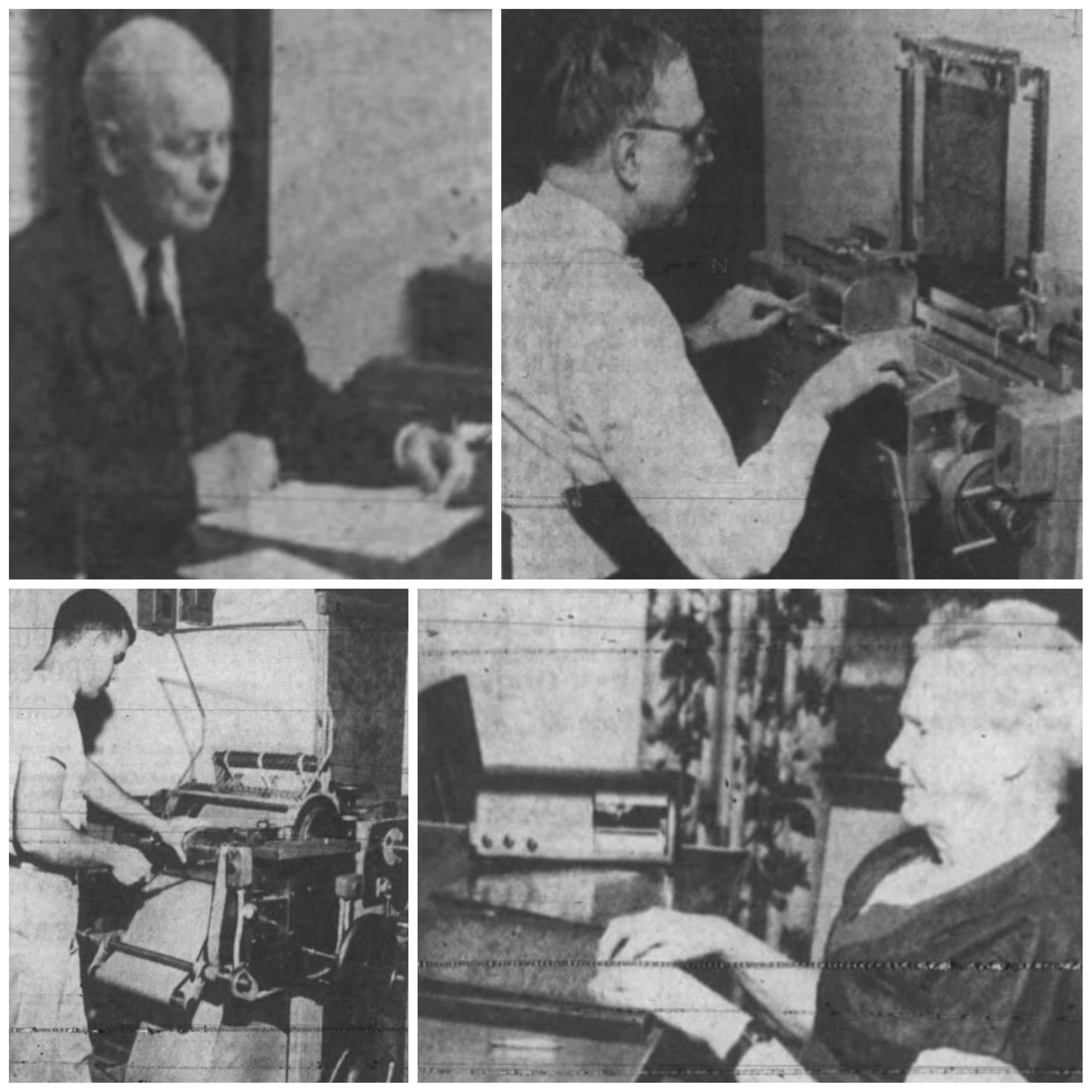
The following article was published in the Lincoln Journal Star on March 30, 1958 and was written by Bess Jenkins:
Lincoln's postmark appears on the covers of almost 18,000 magazines mailed out from this Nebraska capital city monthly to points in all 48 states and 52 other countries of the world.
But whether the addressees live in Arkansas or Africa, Wyoming or Yugoslavia, they never look at the cancellation mark. They cannot see. Yet they can read the pages inside. For all are printed in braille - the magic carpet by which those without sight can read.
The pages remind a sighted person of a fine, heavy brown wrapping paper, dotted with millions and millions of perforations. This is braille - the system of dots by which all letters of the alphabet, punctuation, numerals, and music notation may be formed through combinations.
The Christian Record Benevolent Assn., at 3705 So. 48th, publishes six monthly magazines free of charge.
According to the 13 sighted or 3 sightless employees, there is more than one type of braille embossing. There is grade 1 1/2, containing 44 contractions. Grade 2 has 185 contractions and is the official international system of braille. New York point is another system. It has limited use.
But the Christian Record magazine, the journal which has reached the blind since its first issue in 1900, is printed in both 1 1/2 and New York point.
Life and Health, These Times, The Student, The Youth, and The Children's Friend are the Record's other monthly publications.
How do you go about preparing a braille magazine?
C.W. Degering, as editor, writes, selects, and reads the copy for a magazine issue into a recorder. With six keys at his fingertips, a blind stereotyper transfers the recorded words into raised dots on metal plates. A blind proofreader reads the plates with her sensitive fingers and makes notes of errors on a braille typewriter.
It is estimated at least ten million pages of braille magazine reading are published annually by Christian Record.
This would astonish the young blind man, A.O. Wilson, who started this service 63 years ago.
His plea to Seventh-day Adventist Church leaders in Battle Creek, Mich., in 1895 for some embossed reading material for the blind resulted in some pamphlets and a short-lived magazine.
But his second approach, four years later, heralded the formal organization of the work now represented by the Christian Record Benevolent Assn.
Although originated and still directed by the Seventh-day Adventist Church, the Christian Record work long ago became a separate incorporation and took on a non-secular status with its non-profit operation maintained by contributions and church grants.


